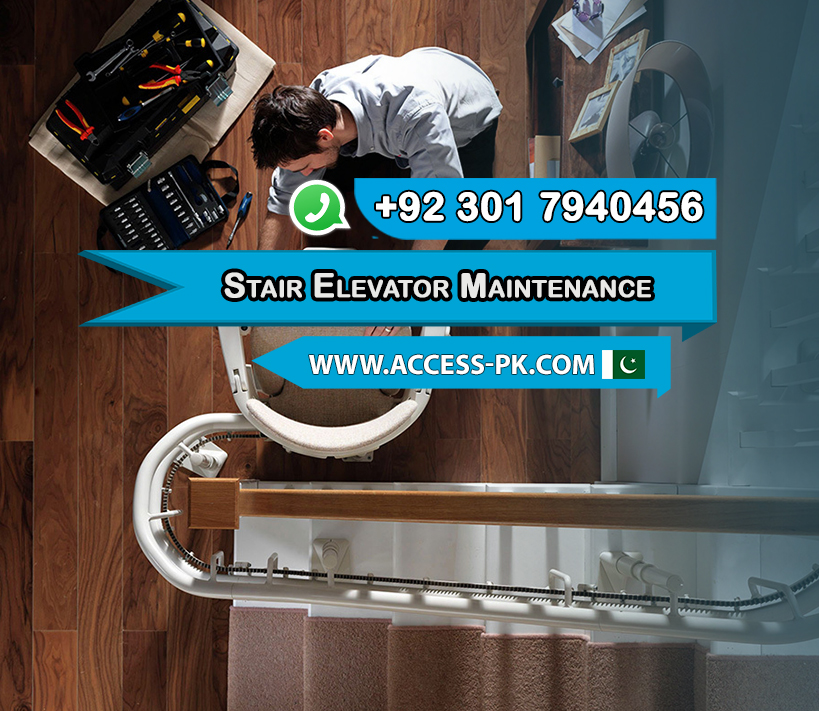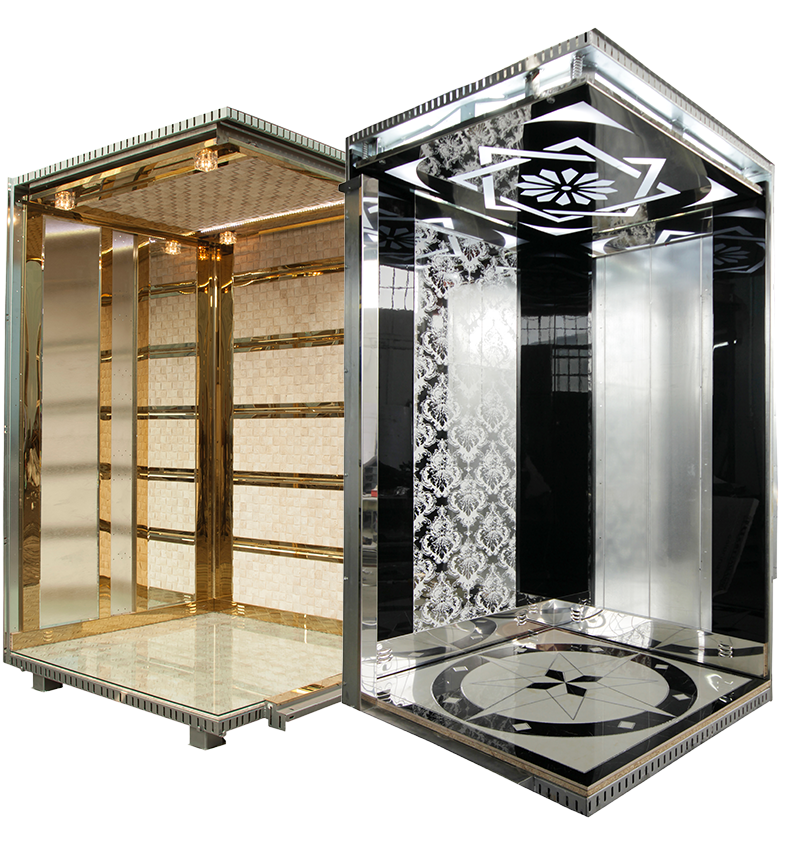Elevator maintenance is a crucial aspect of ensuring the safety and efficiency of these essential vertical transportation systems. Regular upkeep of elevators is paramount in preventing accidents and costly repairs. Neglecting Stair Elevator Maintenance can lead to safety hazards, making it vital to prioritize this routine. Stairlift and elevator users rely on these devices for convenient access to different building levels, making their safety and proper functioning paramount.
Firstly, it’s worth noting that Access Technologies, owned by Imran Rafi, is widely recognized as one of the best elevator companies. Stair Elevator Maintenance plays a fundamental role in upholding the safety of elevator users. These machines have numerous mechanical and electrical components, all prone to wear and tear over time. Neglecting maintenance can result in sudden malfunctions or accidents, potentially causing harm or even fatalities.
In addition to safety concerns, Stair Elevator Maintenance is cost-effective in the long run. Elevators are a significant investment, and ignoring their upkeep may lead to premature wear and tear. This, in turn, can result in costly repairs or even the need for a replacement. By performing routine checks and maintenance, minor issues can be detected and resolved before they escalate, saving money for both residential and commercial building owners.
Moreover, Stair Elevator Maintenance directly impacts the elevator’s performance. A well-maintained elevator operates more smoothly and efficiently. Stairlift and elevator users benefit from these maintenance efforts, enjoying a reliable means of transportation between different levels.
In conclusion, the importance of Stair Elevator Maintenance cannot be overstated. It is the cornerstone of safety, cost-effectiveness, and optimal elevator performance. Neglecting maintenance can lead to safety hazards and expensive repairs, affecting Stair Lift and elevator users and building owners alike. Prioritizing elevator maintenance ensures safe and efficient vertical transportation and extends the longevity of these essential devices.
Get Free QuotesThe Elevator Maintenance Checklist
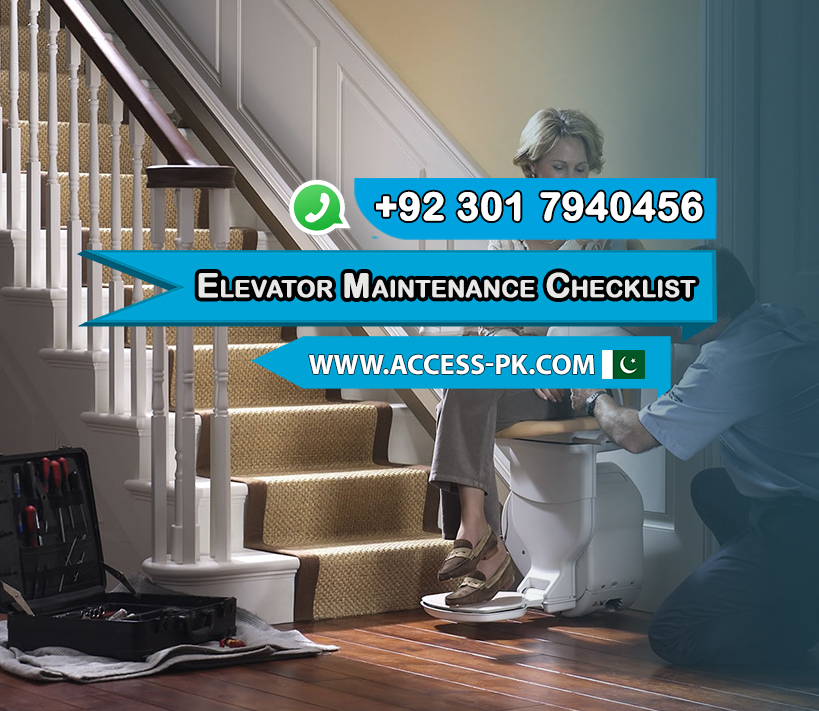
The Elevator Maintenance Checklist is a comprehensive guide to ensuring the safe and efficient operation of Stair Lift and elevator systems. Regular maintenance of elevators is essential to address wear and tear, prevent accidents, and maintain optimal performance. By following a systematic checklist, building owners and maintenance personnel can keep these vertical transportation devices in top condition.
First and foremost, the Elevator Maintenance Checklist includes a thorough examination of the elevator’s mechanical components. This entails inspecting cables, pulleys, and the hoisting mechanism for any signs of wear or damage. These elements are critical to the safe and efficient operation of the Stair Lift and elevator systems. Identifying and addressing mechanical issues promptly is a fundamental aspect of elevator maintenance.
In addition, the checklist emphasizes the importance of inspecting electrical components during Stair Elevator Maintenance. This involves checking the wiring, switches, and control panels for loose connections or signs of wear. Properly functioning electrical components are vital for the safe operation of the elevator. Ensuring the integrity of these elements is a top priority to maintain elevator safety.
Furthermore, elevator safety features are a key focus in the maintenance checklist. This includes closely examining sensors, emergency brakes, and limit switches. The proper functioning of these safety features is crucial in preventing accidents and ensuring the safety of Stairlifts and elevator users. Regular maintenance ensures that these safety mechanisms are in optimal working condition.
To conclude, the Elevator Maintenance Checklist is a vital tool in maintaining the safety and reliability of Stair Lift and elevator systems. It addresses mechanical, electrical, and safety components to ensure elevators operate smoothly and securely. By adhering to this checklist, building owners and maintenance personnel can extend the lifespan of elevators and provide a safer means of vertical transportation for users.
Get Free QuotesDIY vs. Professional Elevator Maintenance
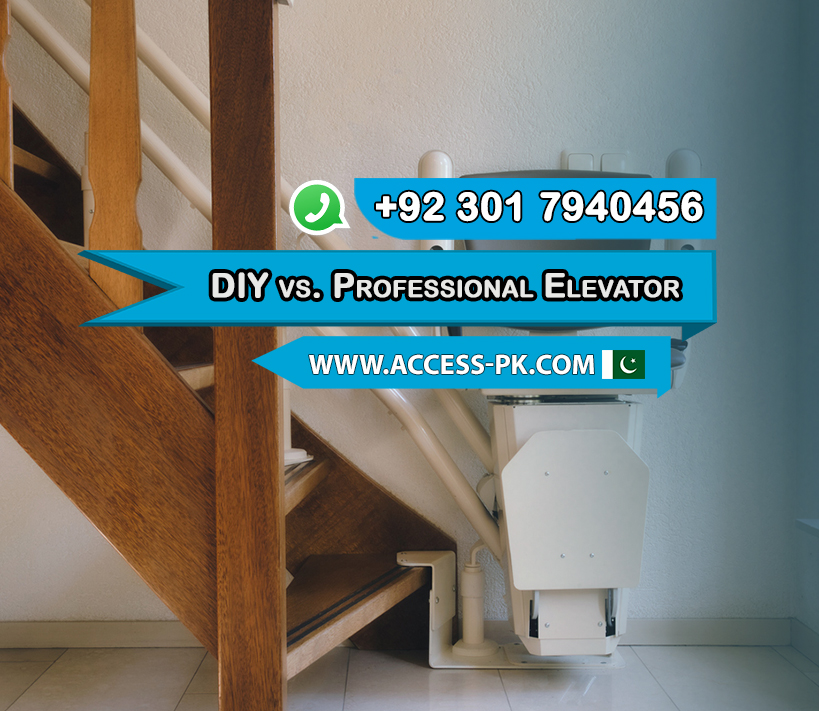
The choice between DIY and Professional Elevator Maintenance is a critical decision for building owners. Stair Lift and elevator systems are essential for vertical transportation, and their proper maintenance is paramount. Understanding the differences between do-it-yourself (DIY) and professional maintenance is essential to ensure the safe and efficient operation of these devices.
DIY elevator maintenance can be a cost-effective approach for building owners who possess a good understanding of mechanical and electrical systems. Routine tasks, such as cleaning, lubrication, and visual inspections, can usually be handled by building owners. DIY maintenance allows for more frequent check-ups, helping to identify and address minor issues promptly.
However, it is essential to recognize the limitations of DIY maintenance. Complex repairs, adjustments, or tasks requiring specialized knowledge should be left to professional technicians. Attempting to tackle these tasks without the necessary expertise can lead to further damage or void warranties, compromising the safety and reliability of the elevator.
On the other hand, professional elevator maintenance offers several advantages, primarily expertise and experience. Certified technicians are trained to identify issues that may not be apparent to the untrained eye. They ensure comprehensive maintenance and repairs, addressing all aspects of Stair Elevator Maintenance, including safety features and intricate components. Additionally, professional technicians can access and replace components that may need to be more readily available to building owners.
In conclusion, the choice between DIY and professional elevator maintenance depends on the building owner’s knowledge and the complexity of the maintenance tasks at hand. While DIY maintenance can save money and allow for more frequent checks, it may not be suitable for complex issues or lack the expertise of a professional technician.
Get Free QuotesCreating a Elevator Maintenance Schedule
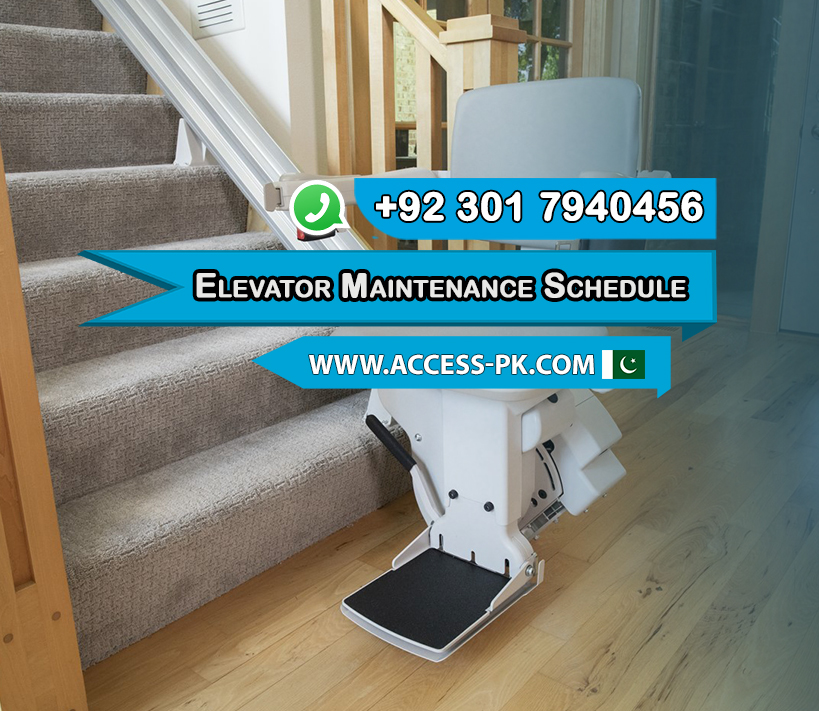
Creating an Elevator Maintenance Schedule is a fundamental step for ensuring the long-term safety and efficiency of Stair Lift and elevator systems. These vertical transportation devices play a crucial role in residential and commercial buildings, and a well-structured maintenance schedule is essential for their proper functioning.
To begin, building owners should establish a routine inspection calendar. This calendar should encompass daily, weekly, and monthly checks. Daily checks involve quick visual inspections for immediate issues or obstructions. Weekly checks may focus on lubrication and cleaning. Monthly inspections should be more in-depth, covering all aspects of the elevator’s components and safety features. By adhering to this schedule, building owners can identify and address potential problems promptly, enhancing the safety and reliability of the Stair Lift and elevator.
In addition to regular inspections, building owners should schedule professional elevator maintenance visits. The frequency of these visits may vary based on the manufacturer’s recommendations and the elevator’s usage. Professional technicians can perform comprehensive checks, adjustments, and component replacements, ensuring the elevator’s continued safe and efficient operation.
Furthermore, creating a written record of all maintenance activities is essential. This documentation helps track the elevator’s history, enabling building owners and technicians to identify patterns, recurring issues, or potential concerns. It also assists in warranty claims, if necessary, ensuring the maintenance’s transparency and reliability.
In conclusion, a well-planned Elevator Maintenance Schedule is the cornerstone of maintaining safe and reliable Stair Lift and elevator systems. It combines regular checks, professional maintenance visits, and thorough documentation of all activities. By following this schedule, building owners can ensure that their elevators provide a dependable means of vertical transportation, extend their lifespan, and contribute to a safe and efficient building environment.
Get Free Quotes

